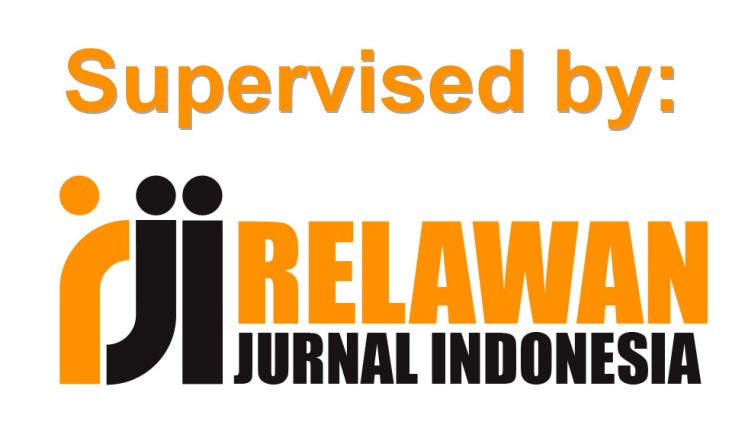KAJIAN TEKSTUAL TARI BUKU DALAM ACARA MALAM MAMEDADAO PADA MASYARAKAT MUSLIM DI KECAMATAN LAHEWA KABUPATEN NIAS UTARA
DOI:
https://doi.org/10.24114/senitari.v9i1.17983Abstract
ABSTRACTThis study aims to describe the textual study of the Buku dance to Muslim communities in Lahewa District, North Nias Regency. The theories used in this study include the theory of textual form by Y Sumandiyo Hadi. To describe the dance of the book being studied in the form of; choreographic analysis consisting of (forms of motion, motion techniques and forces of motion), structural analysis (motives of motion) and symbolic analysis (meaning of motion). This study uses a descriptive qualitative approach. Descriptive aims to describe or elaborate textual studies on the Buku dance The method used in data collection is by means of observation, interviews, documentation and literature study. The results of the study said that the Buku dance is a traditional dance in the Muslim community in North Nias Lahewa which is shown at the Mamedadao night event, which is the art night when initiating. In terms of choreographic analysis consists of (1) for motion, form is a form as a result of dance elements, namely motion, which includes forms of motion based on energy, space and time. forms of motion that there are eight variations in the Buku dance, namely; mangowai, lafabuku, fafuta banahia, lahehea, lafangasa fafuta matonga gaolo ba afonu, lafali and fandroho. (2) Motion technique, a technique that means the whole process both physically and mentally that enables dancers to realize their aesthetics in a composition or choreographic, motion techniques that include hands, feet and body in the Buku dance, namely; saluting, bending, turning in place, swinging, dragging, turning half circle and full, wrapped around and closing. (3) the force of motion, the force in this understanding is more directed to the context of characteristics or patterns contained in the forms and techniques of motion, the motion force is more dominant towards the motion of silat which leads to the context of a characteristic. From the structural analysis of the Buku dance, verbally recorded there are 29 motifs, 29 phrases, 22 sentences, 10 clusters and 1 form. From the symbolic analysis side, it can be understood the meaning of its motion to signify unity, that every human being will always need others to help each other. Keywords: Buku dance, Textual, Mamedadao, Lahewa, North Nias. ABSTRAKPenelitian ini bertujuan untuk mendeskripsikan kajian tekstual tari Buku pada masyarakat muslim di Kecamatan Lahewa Kabupaten Nias Utara. Teori-teori yang digunakan dalam penelitian ini meliputi teori bentuk tekstual oleh Y Sumandiyo Hadi. Untuk menguraikan tari Buku yang dikaji dalam bentuk; analisis koreografis yang terdiri atas (bentuk gerak, teknik gerak dan gaya gerak), analisis struktural (motif gerak) dan analisis simbolik (makna gerak). Penelitian ini menggunakan pendekatan kualitatif yang bersifat deskriptif. Deskriptif bertujuan untuk menggambarkan atau menguraikan kajian tekstual pada tari Buku Metode yang digunakan dalam pengumpulan data yaitu dengan cara observasi, wawancara, dokumentasi dan studi kepustakaan. Hasil penelitian mengatakan bahwa tari Buku merupakan tarian tradisi pada masyarakat muslim di Lahewa Nias Utara yang ditampilkan pada acara malam Mamedadao yaitu malam kesenian saat berinai. Dari sisi analisis koreografis terdiri dalam (1) brntuk gerak, bentuk adalah wujud sebagai hasil dari elemen tari yaitu gerak, yang meliputi bentuk gerak berdasarkan tenaga, ruang dan waktu. bentuk gerak yang terdapat delapan ragam dalam tari Buku, yaitu; mangowai, lafabuku, fafuta banahia, lahehea, lafangasa fafuta matonga gaolo ba afonu, lafali dan fandroho. (2) Teknik gerak, teknik diartikan seluruh proses baik fisik maupun mental yang memungkinkan penari mewujudkan estetisnya dalam sebuah komposisi atau koreografis, tehnik gerak yang meliputi tangan, kaki dan badan pada tari Buku, yaitu; memberi hormat, membungkuk, memutar ditempat, mengayun, menyeret, memutar setengah lingkaran dan penuh, melilit dan penutup. (3) gaya gerak, gaya dalam pemahaman ini lebih mengarah pada konteks ciri khas atau corak yang terdapat pada bentuk dan teknik gerak, gaya gerak lebih dominan kearah gerak silat yang mengarah pada konteks ciri khas. Dari sisi analisis struktural tari Buku dicatat secara verbal terdapat 29 motif, 29 frase, 22 kalimat, 10 gugus dan 1 bentuk. Dari sisi analisis simbolik dapat dipahami makna geraknya untuk menandakan bersatu, bahwa setiap manusia akan selalu membutuhkan orang lain untuk saling membantu.Kata Kunci: Tari Buku, Tekstual, Mamedadao, Lahewa Nias UtaraDownloads
Published
Issue
Section
License
Copyright (c) 2020 Eni Setiawati, Tuti Rahayu

This work is licensed under a Creative Commons Attribution-ShareAlike 4.0 International License.
Authors published with the Gesture: Jurnal Seni Tari agree to the following terms:
- Authors retain copyright and grant the journal the right of first publication with the work simultaneously licensed under a Creative Commons Attribution License (CC BY-SA 4.0) that allows others to share the work with an acknowledgment of the work's authorship and initial publication in this journal.
- Authors are able to enter into separate, additional contractual arrangements for the non-exclusive distribution of the journal's published version of the work (e.g., post it to an institutional repository or publish it in a book), with an acknowledgment of its initial publication in this journal.
- Authors are permitted and encouraged to post their work online (e.g., in institutional repositories or on their website) prior to and during the submission process, as it can lead to productive exchanges, as well as earlier and greater citation of published work. (See The Effect of Open Access)







